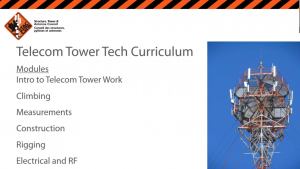#STAC2021: State of the wireless industry
Robert Ghiz, President and CEO of the Canadian Wireless Telecommunications Association (CWTA) was the featured keynote speaker for the penultimate session of STAC2021, the annual conference of Canada’s Structure, Tower and Antenna Council, held online this year, after having to cancel last year’s event due to COVID-19.
In my years hosting The Canadian Telecom Summit, I have had the pleasure of welcoming Robert a number of times. His talks are typically packed with statistics and topical information about the wireless industry and its impact on Canadians and Canada’s economy. And he is arguably the most prominent public figure pushing Prince Edward Island as the tourist destination of choice when we get past these pandemic times.
Today, he shared important perspectives on Canada’s wireless and telecommunications industry as a key part of nation building, saying “Our industry today is what the railway was 150 years ago.” STAC members and the telecommunications industry have met the challenges of the pandemic head-on. “Canada’s wireless industry has been recognized as a national success story throughout this pandemic.”
CWTA members ensured that “even with intensified network traffic and altered usage patterns, that Canadians can continue to rely on the high-quality networks to which they have become accustomed.”
He told STAC that “Canada’s telecom network operators continue to invest billions each year in expanding Canada’s digital infrastructure while ensuring that Canada maintains its global leadership in quality of service by deploying next-generation technologies such as 5G.”
These investments have also outpaced our global peers. In the G7, Canada ranks first for investment by spending $255 per capita on telecoms, compared to $156 for the average OECD country and re-investing 23 cents for every dollar of revenue, compared to the average of 15 cents in OECD countries.
A report by Accenture estimates that $26 billion will need to be invested by facilities-based carriers between 2020 and 2026 in order to deploy the network infrastructure for 5G. Accenture found that Canada’s facilities-based wireless carriers have invested over $72.3 billion in building Canada’s wireless networks since 1987.
With its focus on facilities-based competition, yesterday’s CRTC decision [decision, backgrounder, news release] appears to endorse the federal government’s statement last summer that “Canada’s future depends on connectivity.”
In a statement following the release of the CRTC’s decision, Minister Champagne wrote:
Throughout the COVID-19 pandemic, Canada’s telecommunications service providers and their front line workers have been doing their part and providing essential services to keep Canadians connected. Now more than ever, Canadians are relying on telecommunications services for work, school, finances and health care – making access to high-quality and affordable services essential.
Returning to the address by Robert Ghiz to STAC 2021, he closed by emphasizing the importance of investment in telecommunications services. “COVID-19 has highlighted the need to invest in providing digital access to all Canadians.”
Canada’s future depends on connectivity.


